Does it snow in Oregon? Though Oregon’s climate is surprisingly mild given how far north it is, the state receives snow in many areas. Here are the snowiest places in the state.
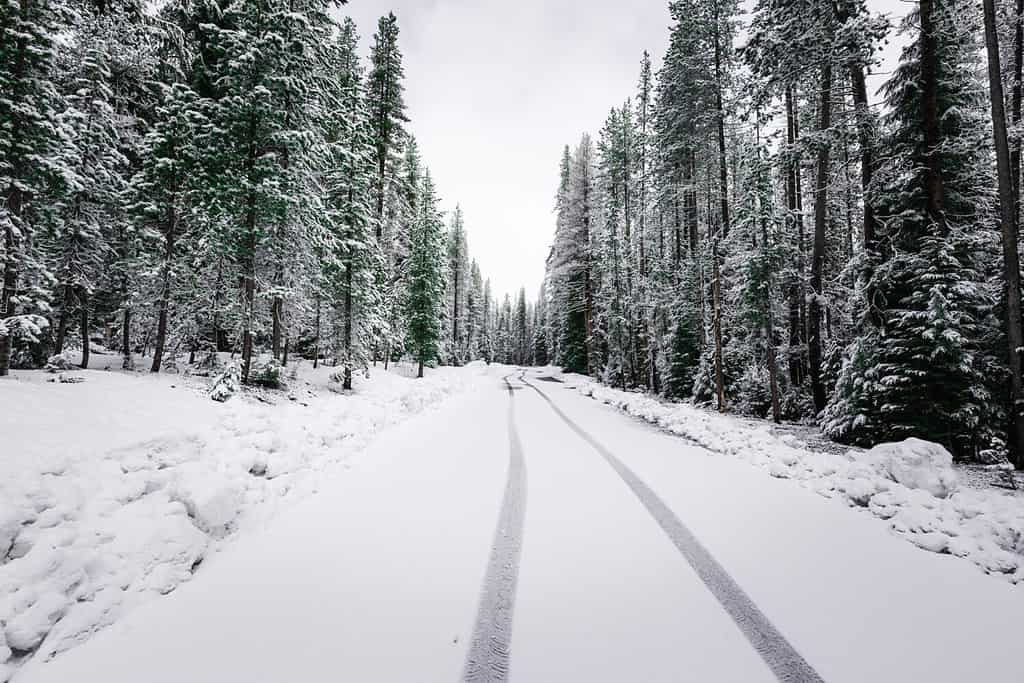
Oregon’s Volcanic Legacy Scenic Byway is lovely after a fresh fall of snow.
©Cat Dang Photography/Shutterstock.com
Oregon’s Climate
Oregon has two climates. The west of the state enjoys a Mediterranean climate, with summers that are warm and dry and winters that are cloudy and wet. In contrast, the climate in the east of the state is cold and semi-arid. Areas west of the Cascade Mountain Range often experience bitterly cold, snowy winters. In fact, there are a handful of ski resorts in the area.
Crater Lake
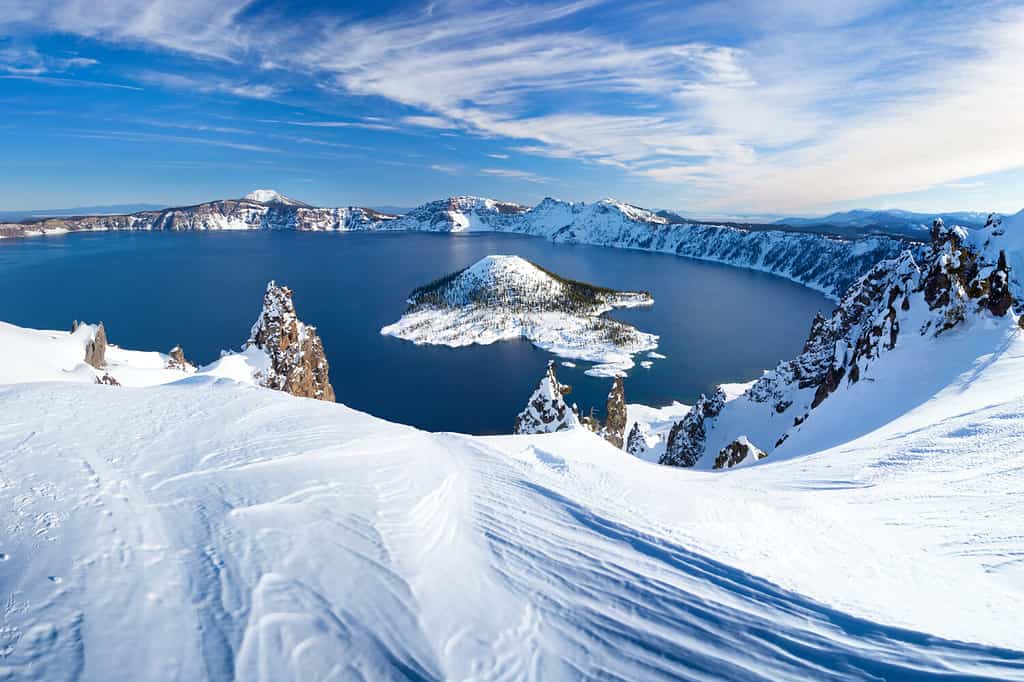
This beautiful volcanic lake gets its water entirely from snow or rain.
©Matthew Connolly/Shutterstock.com
Prized for its sapphire blue water, this lake is what’s left of Mount Mazama, a volcano that collapsed about 7,700 years ago. Found in Klamath County in the south of the state, Crater is the deepest lake in the United States at 1,949 feet. This deep lake has no inlet or outlet, and it is replenished by both rain and snow. In 1950, it received the greatest snowfall the state has ever seen. In that year, 903 inches of snow fell on Crater Lake. On average, the area receives an amazing annual snowfall of 463 inches, with the snow cover averaging 11.58 feet. This immense snowfall is due in large part to the Aleutian Low, a low-pressure system that comes down from the Aleutian Islands during the winter. It’s possible for Crater Lake to get snow even in the summer months, and snow that falls in the winter often doesn’t melt until the middle of July.
Mount Hood Meadow
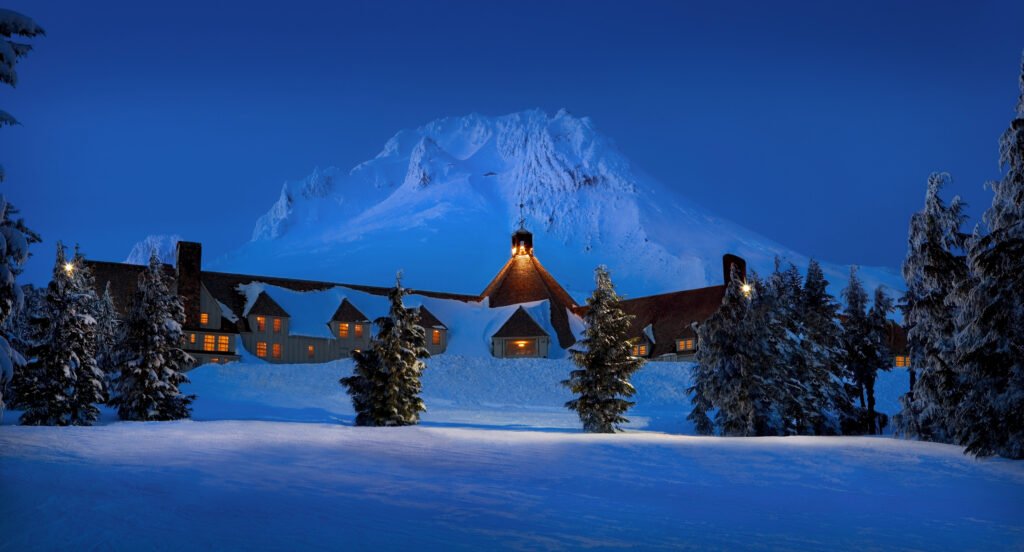
One of the snowiest places in Oregon, Mount Hood, also has glaciers.
©Troy Maben/Shutterstock.com
Found in Hood River County, this area near the Washington state border gets about 322 inches of snow every year, with a snow covering of 79 inches on average. There are 16 snowfall days a year, on average, around Mount Hood Meadows. Mount Hood itself is covered in snow all year round and supports 12 glaciers. Because of this, you can ski all year at Mount Hood.
Mount Bachelor
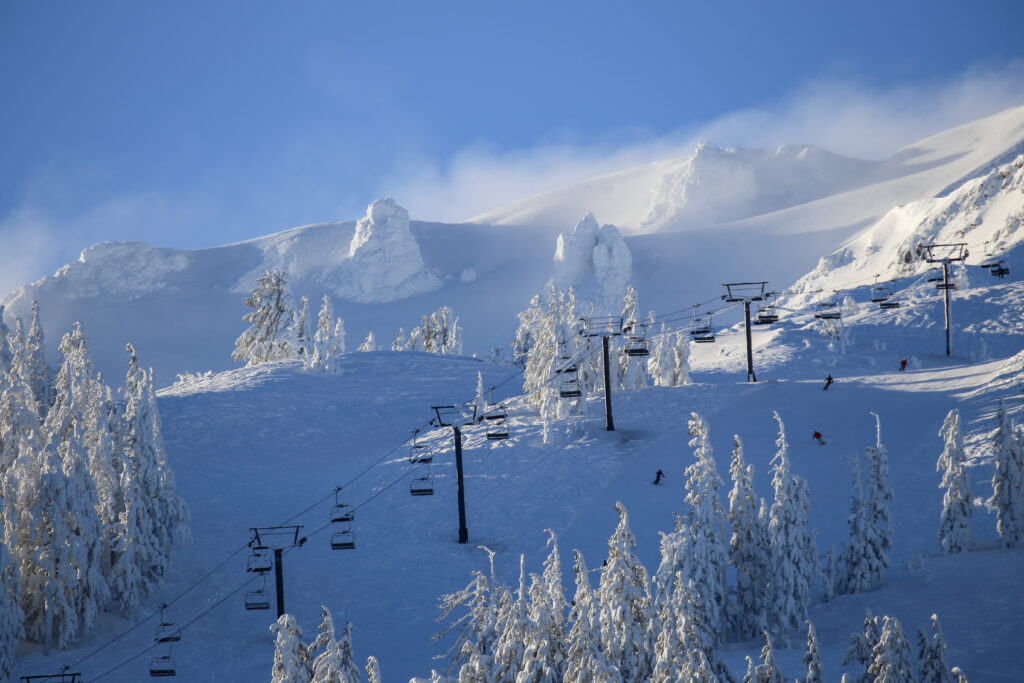
Snow falls eight months out of the year on Mount Bachelor.
©CSNafzger/Shutterstock.com
One of the Cascade Mountains’ dormant volcanoes, and one of Oregon’s snowiest places, Mount Bachelor gets around 374 inches of snow every year on average. Found in east central Oregon, it has 69 snowfall days and the snow depth on the mountain is 69 inches. It snows eight months out of the year at Mount Bachelor, and December is the snowiest month with 96 inches of snow.
Sisters

The town of Sisters was named after Oregon’s Three Sisters mountain peaks.
©U.S. Forest Service- Pacific Northwest Region / Public domain – Original / License
Named for the famous Cascade peaks called the Three Sisters, this town gets an average of 32 inches of snow per year. However, during the winter of 1992 to 1993, snow began in December and didn’t stop until March of 1993. Not only this, but the winter was unusually cold, and the snow wouldn’t melt. Eventually, there were accumulations of over 100 inches.
Sunriver

Sunriver lies on the eastern banks of the beautiful Deschutes River.
©Don Miller/iStock via Getty Images
The town of Sunriver is on the eastern banks of Oregon’s Deschutes River. Though it has a Mediterranean climate with warm, dry summers, Sunriver gets about 60 inches of snow per year, with January and February being the snowiest months.
LaPine
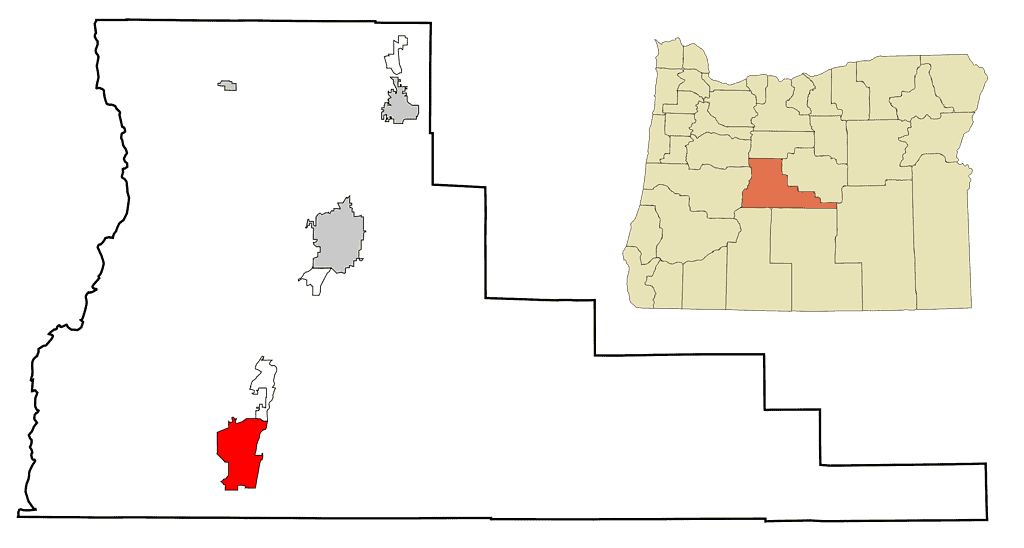
This snowy region of Oregon is located in the center of the state.
Found in Deschutes County in central Oregon, LaPine is one of the snowiest places in the state. It gets an average snowfall of around 81 inches per year.
Bend

On top of a dormant volcano, Mt. Bachelor is a super snowy area in Bend Oregon.
©CSNafzger/Shutterstock.com
Bend is the county seat of Deschutes County and one of the larger cities in the Cascade Range, with a population of about 198,253. Its annual snowfall is about 33.8 inches, and its depth usually doesn’t exceed 2 feet.
Astoria
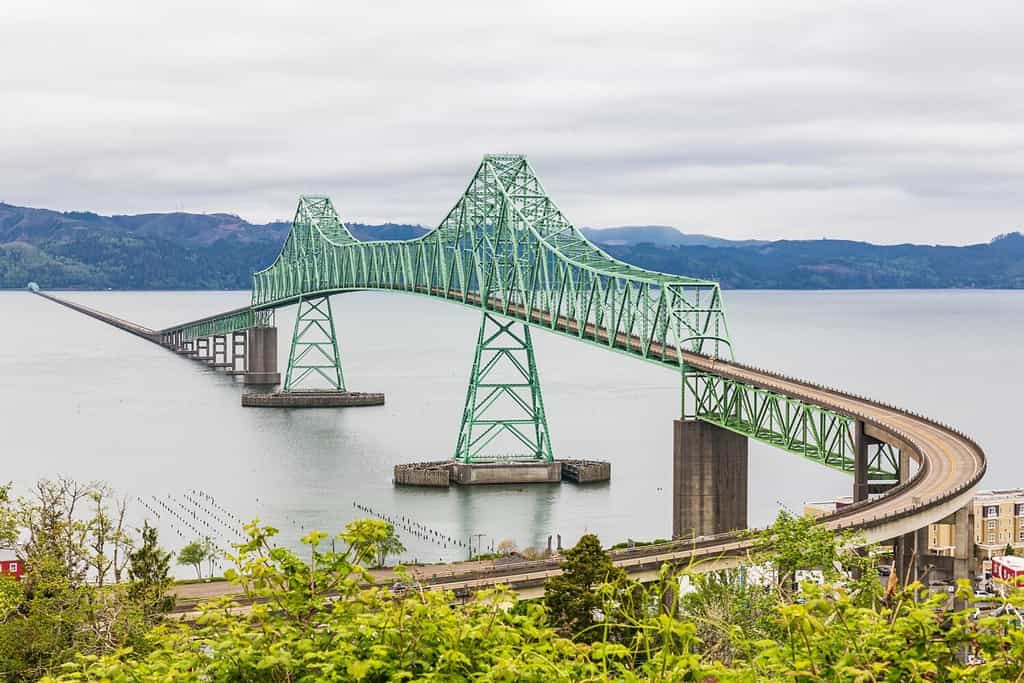
Astoria, the state’s oldest city, features a Mediterranean climate and cool winters.
©Danita Delimont/Shutterstock.com
Along with places in the Cascade Range, towns along the coast also get a healthy bit of snow in the winter. Astoria, the state’s oldest city is found on the Columbia River’s southern shore where it meets the Pacific Ocean. It has a Mediterranean climate, and its winters are cool as opposed to bitingly cold. Snowfall is usually sparse, and the average is only 2 to 3 inches a year. However, every now and then, this city gets a great deal of snowfall. For example, Astoria experienced a cumulative snowfall of over 27 inches at the end of December 1969.
Klamath Falls
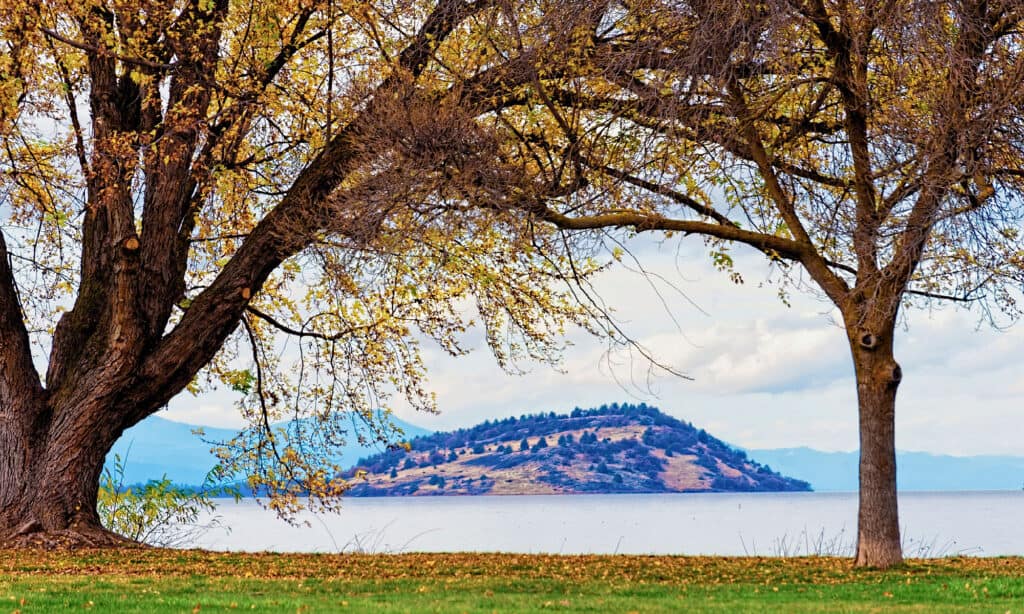
Klamath Falls gets a good amount of snow but is famous for its sunny days.
©iStock.com/Dee
The county seat of Klamath County is Klamath Falls, found on the Link River Falls. It is famous for receiving an abundance of sunshine during the year, though it has a high desert climate. Its winters are both cold and snowy, making it one of the snowiest places in the state. The average annual snowfall is about 36.5 inches, and between July 1955 and June 1956, 100 inches of snow fell!
Thank you for reading! Have some feedback for us? Contact the AZ Animals editorial team.








